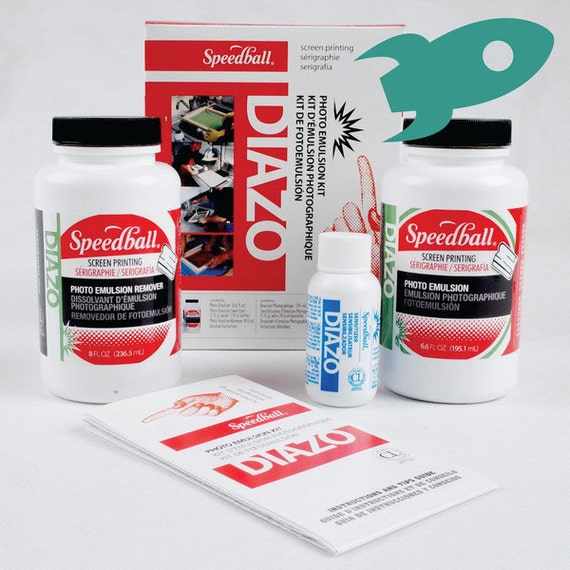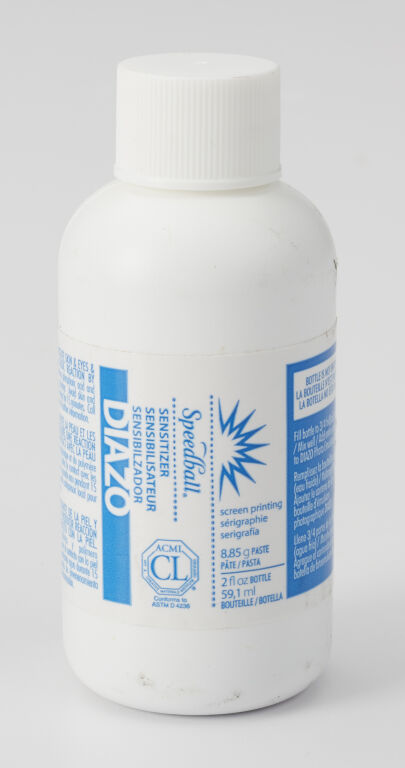

If you have a small production screen printing, you can benefit from this kit. Better still, the ink is water-soluble and easy to clean. Whether you use it in synthetic or natural fabrics, it will stain forever. These durable inks can adhere to almost any surface and withstand frequent washing and dry cleaning.

Jacquard produces high-quality inks that are easy to work with, and they offer so much flexibility. You can use the kit to create art on fabric, paper, vinyl, leather, and plastic among others. The Jacquard Screen Printing Kit is a great kit for beginners. Four ounces of Speedball Speed Cleaner.3.3 ounces of Speedball Diazo Photo Emulsion.Four ounces of Speedball Photo Emulsion Remover.Four ounces fabric screen printing ink.From, here, you are good to transfer the print to your t-shirt. Wash out the blue drawing fluid with cold water to expose your drawing. This filler covers all the parts of your screen that you do not want to print. The second step is to coat the screen using the screen filler. The design you draw on your screen turns to be your printed image, so make it as good as you want. With the Speedball Intermediate Kit, you can draw your imagery on the screen, or you can sketch it out on paper. With the kit, you are able to turn simple designs into custom pieces. You can use drawing fluid and screen filler to add your hand-drawn art and painterly imagery to your t-shirts. Speedball includes clear instructions to enable you to get started with ease. If you already have the basic skills in screen printing, this kit offers you all you need to create amazing prints on t-shirts using methods such as photo emulsion and drawing fluid and screen filler. Start by running warm water on both sides of the screen to loosen the emulsion.Speedball Intermediate Screen Printing KIT Review Once your timer dings, turn off the light, remove your artwork and bring the screen to the sink. The next step will be to wash unexposed emulsion from the screen. When it runs down to about 1 minute, turn on the kitchen faucet and let the water warm up. Turn on your timer and hang out for a while. You can tape the acetate sheet down with clear tape if you don’t have glass or plastic, but make sure the image is flush with the screen or it could burn blurry.

On top of that we place our acetate sheet and on top of the acetate place a clear piece of glass or heavy plastic. We want the side of the frame that has the screen attached placed flat onto the table. The acetate image is placed on the screen and a heavy plastic sheet is placed on top to prevent movement.Īfter everything has been set up, grab your screen from its dark hiding spot. My simple set-up: a 120W Equivalent Daylight (5000K) R40 CFL flood bulb in a clamp light reflector placed 12″ above the screen.

Basic household bulbs are too weak to bother with, and the sun is too unpredictable. Different intensities of light will alter the exposure time, so I recommend using the light I’ve listed. Once the light is in place, set a timer for 12 minutes. Clamp the light 12″ above the table top and make sure it is pointed straight down, tilting it could create an uneven burn. Find a table where no animals or people will bump things around and prepare the area. A clamp light fitted with a powerful outdoor wall light works well for this process. Now that the screen has been prepared with photo emulsion, we are ready to burn our image. Once it’s dry to the touch I blast it with heat for a few more minutes just to be safe. You can lightly touch around the edges of the screen to see if the emulsion is tacky. If you chose to do this, be sure to dry both sides of the screen in a dark room. About 5-8 minutes is enough to dry out the emulsion fully (if it has been applied thinly). I use a blow dryer to dry the screen for immediate use. Remember, the emulsion is light sensitive, so prolonged exposure to excessive light will prevent you from burning your image properly. A fan blowing across the screen will speed up drying times. Put the screen in a dark, dry place where very little to no light will reach it. Screen flipped and emulsion applied evenly to the back side.Īfter the emulsion has been applied, it’s time to let the emulsion dry.


 0 kommentar(er)
0 kommentar(er)
